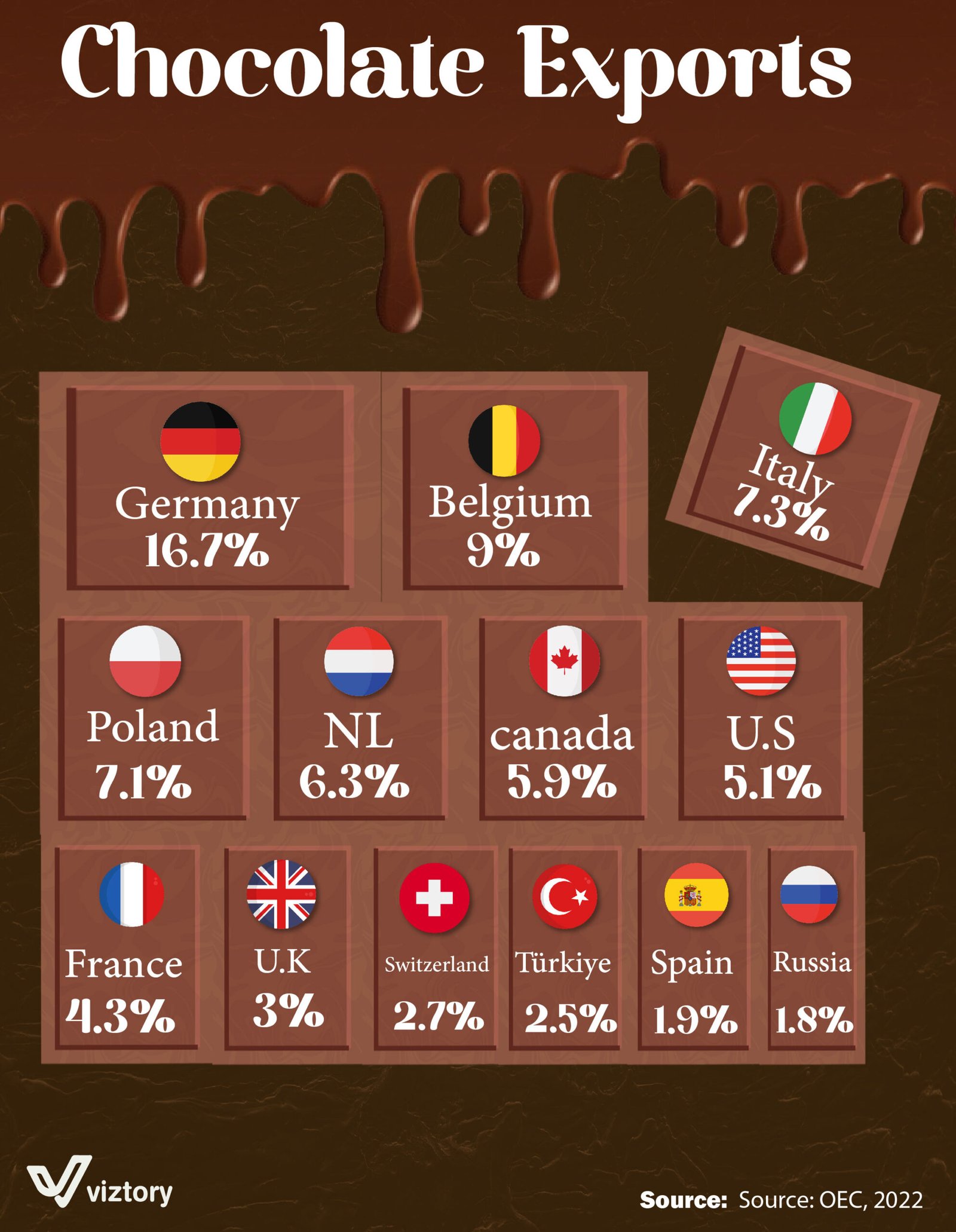Chocolate Exports: A Sweet Contribution to Global Trade
-
Jan, Thu, 2025
Introduction
Chocolate is more than a delightful treat; it’s a multi-billion-dollar industry that plays a crucial role in global trade and economies. As countries compete in the production and export of chocolate, some nations have emerged as leaders, shaping the industry and satisfying global demand. Below, we explore the key players in chocolate exports, their contributions, and the financial impact of this booming market.
Key Exporting Countries
Germany (16.7%)
- Germany is the world leader in chocolate exports, holding the largest market share.
- It boasts advanced manufacturing techniques and a strong reputation for quality.
Belgium (9%)
- Renowned for its rich chocolate-making tradition, Belgium maintains its position as a global chocolate powerhouse.
- Its expertise attracts premium markets worldwide.
Italy (7.3%)
- Italy combines traditional recipes with modern technology to cater to global tastes.
- Its chocolate industry supports a thriving export sector.
Poland (7.1%) & Netherlands (6.3%)
- These two European countries benefit from their strategic location and efficient logistics networks.
- They play a significant role in supplying chocolate to nearby countries.
North America
- Canada (5.9%) and United States (5.1%) have carved out significant shares in the global market.
- These countries rely on their massive production capacities and established trade networks.
Other Key Players
- France (4.3%) emphasizes artisanal quality, blending tradition with modern demands.
- United Kingdom (3%) remains competitive despite trade challenges like Brexit.
- Switzerland (2.7%) is synonymous with luxury chocolate, maintaining its legacy in the industry.
- Türkiye (2.5%), Spain (1.9%), and Russia (1.8%) are growing contributors, reflecting the globalization of chocolate trade.
Economic and Financial Impact
Revenue Generation
- Chocolate exports contribute billions of dollars annually, bolstering GDPs of major exporters like Germany, Belgium, and Italy.
- Emerging exporters like Türkiye are also seeing rapid growth in revenues.
Employment
- The industry supports millions of jobs, from cocoa farmers to manufacturers and exporters.
Global Trade Influence
- Chocolate is a symbol of international trade success, with countries leveraging their expertise to expand their global reach.
Conclusion
Chocolate exports are a testament to the interconnectedness of global trade, blending innovation, tradition, and financial impact. While Germany and Belgium dominate the market, other countries are rapidly expanding their influence, making this a competitive and ever-evolving sector. As global demand for chocolate continues to rise, the industry remains a sweet spot for economic growth and international collaboration.

